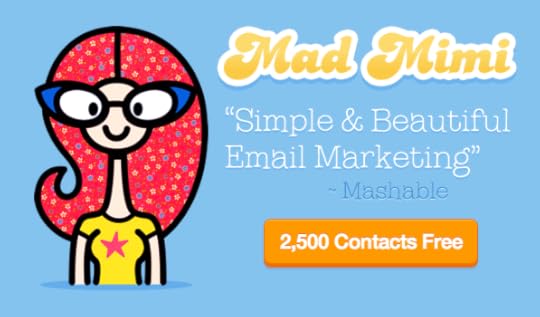Khoi Vinh's Blog, page 138
June 4, 2013
Window Air Conditioning Has a Long History of Sucking
Last night I wondered aloud on Twitter why window-based air conditioning units are so poorly designed, and why the technology seems so primitive. The average window unit, circa 2013, more or less resembles its forbears from decades ago: it’s still noisy, inelegant, heavy, and it looks like it was designed as a set dressing for “Logan’s Run.”
It was sort of an idle tweet, but it garnered a surprisingly fervent response. There seems to be broad agreement not only that these machines seem hopelessly stranded in time, but also that that shouldn’t be the case. The fact that no James Dyson has reinvented the window unit is a surprise to nearly everyone. After all this is a market in the billions of dollars; if a crafty entrepreneur could create a product that successfully addresses even just a sliver of that, they’d be doing very well.
To me, this is one of the enduring mysteries of contemporary industrial design, which has over the past twenty years sought to reinvent, redesign or elevate out of commodity status almost every object in the home, from vacuum cleaners to thermostats to toaster ovens. The closest thing to innovation that the AC market seems to have produced is so-called ductless air conditioning, but those units don’t address the problem that most Westerners want to solve with window units: cool a room with a machine that costs less than US$1,000. Ductless AC units are significantly more expensive to buy and considerably more difficult to install. And perhaps as a result, they are nowhere near as prevalent as window units.
Anyway, when I wrote the tweet I felt like I’d been lamenting this situation for years. It also occurred to me that I might have blogged about it before. When I did a search on Subtraction.com I realized that was in fact the case — I first wrote about this back in 2003. Ten years later, nothing has changed. If you’d have told me back then that that would be the case, that even by 2013, no one would come along and solve this problem or grab this opportunity, I wouldn’t have believed you. I guess it just goes to show you how our supposedly torrid pace of change is sometimes not so speedy after all.
To follow me on Twitter click here.

May 30, 2013
The Tech Industry and the World Around It
George Packer’s article “Change the World” in the 27 May issue of The New Yorker is a thoughtful and damning survey of the tech industry’s political inclinations. It’s a must-read for anyone in startup land, but unfortunately the magazine’s publisher has shrouded it behind subscriber-only access, ensuring that its influence will be limited. (Condé Nast’s approach to digital access to its content still sets the industry standard for being inaccessible and user-unfriendly.)
Packer turns a cold eye on the tech industry at large, and on Silicon Valley and its environs specifically, questioning the true motivations behind and implications of countless companies’ collective desire to “change the world.” The Internet Age has made great breakthroughs and great wealth possible for virtually anyone who has the means to enter the fray of the technorati, but Packer argues that it has done scant little to truly improve the world around it. Tech companies create billions of dollars in real and virtual wealth, but the economy at large remains frustratingly sluggish, with incomes stagnant and employment barely growing. San Francisco, in particular, “is becoming a city without a middle class,” and private school enrollment soars in the Bay Area while public schools whither everywhere. Packer argues that the industry has come to believe that it can better the world by looking after itself first and last, effectively shirking any broader civic obligations, and that it generally regards government as a ruinous wasteland to be avoided and routed around, rather than as a means for social good.
I recommend you get your hands on this article in some form if you haven’t yet, but in the meantime you can get a taste for Packer’s sober and insightful reasoning in this follow-up blog post he wrote, which Condé has graciously made available to all comers. Packer’s original article appeared just before Yahoo acquired Tumblr and Tim Cook appeared before Congress to answer questions about Apple’s labyrinthine tax avoidance strategies, and he addresses both of those events in this blog post.
To follow me on Twitter click here.

May 29, 2013
Magazine
French publication Magazine has an interesting concept for its covers: their masthead takes the form of a removable and re-positionable sticker, leaving the cover image itself beautifully unadorned.
See spreads Magazine at their Web site. I found this, by the way, over at the fantastic and frequently updated Cover Junkie, a showcase for current publication design. Totally worth adding to your regular rotation.
To follow me on Twitter click here.

May 28, 2013
Fracture. Photos printed on glass. Feed Sponsorship

Fracture prints your photo in vivid color] directly on glass. It’s picture, frame & mount, all in one.
It’s a modern, elegant and affordable way to print and display your favorite memories. Your print comes with everything you need to display your photo, right in the durable packaging.
Fractures come in a variety of sizes and prices, starting at just $12, with free shipping on orders of $100 or more.
Fracture prints make great Father’s Day gifts and are the perfect way to fill up empty walls in your new home or apartment. Check it out.

May 21, 2013
Igloo Feed Sponsorship

Igloo has some funny new Sandwich videos to lighten your day (and maybe convince your boss and/or IT to upgrade your intranet to something more human). Check them out:
Intranet
Updates
Versions
(You can also get a free 30-day trial and bring back Cake Fridays here.)

May 16, 2013
When Designers Interview Engineers
The reality for most designers is that we are very likely to work at companies whose principal line of business is not design, but something else — media, services, widgets, what have you. This is slightly less true if you’re in the studio or agency world, but certainly if you do interaction or product design, you’re probably working in an environment that’s engineering-focused first, and design-focused second (or third). There’s a tech sector, but there’s no ‘design sector.’
Thankfully, as the design profession has matured designers have learned to assert themselves effectively in these situations. That includes having a say in the process of hiring new team members. Just as engineers and product managers (who more often than not come from engineering backgrounds) will often interview potential design hires, it’s becoming increasingly common for designers to interview engineering candidates too. I’ve done it a lot over the past several years, and it’s not uncommon at Etsy.
For designers though, interviewing an engineer does not always come naturally. In part this is because the language of engineering is so concrete and therefore more widely assimilated, and the language of design is comparatively soft and resigned to niches.
What to Ask
If you’re a designer interviewing an engineering candidate, I think what you want to know is basically “will I be able to work with this person?” I’ve found that the easiest place to start is to inquire about the candidate’s past experiences working with other designers. What was the arrangement like? Who did what? What bumps in the road did they hit? What were the easiest and hardest things about working with those designers? What did they learn about how design intersects with their job?
I also find that the simplest questions will often yield the most effective answers: did the engineering candidate enjoy working with designers? Was it a good time, a necessary evil, or a burdensome chore? There can be a world of insight in the answers that come back.
There’s also the more neutral ground of asking the candidate to talk about any products, services, features, user interface details etc. that they’re fond of. The way they describe that product or feature, the details they call out, and the reasons they give for being sympathetic to it — all these things talk directly to what they value in their own work.
Design Topics Are Fair Game
None of what I’m suggesting here is particularly innovative, of course. Most designers would come up with them on their own, given enough exposure to engineering interviews. A slightly more interesting idea is to have designers asking engineers about design topics.
It’s much more common for designers to be expected to master the engineering vernacular than vice versa, but that shouldn’t stop designers from asking engineers what they know about design. Designers might hesitate to ask if the engineer understands anything about typography, color, images, branding systems and logos, but I say why not? It’s perfectly fair game to ask if an engineer understands why a given design solution works, why some typography looks better than others, or what makes a good design good, and a bad design bad. An engineer who understands these things is a tremendous asset in shipping great products, and designers are best equipped to assess that.
It might be true that most engineering candidates will likely answer in the negative to these queries, and the interviewer should to set his or her own expectations accordingly. But even if the engineer displays some scant, perhaps intuited knowledge about design, or even a genuine if uninformed interest in design, that’s valuable.
More to the point, it’s one small step in establishing a certain baseline in the relationship between designers and engineers, one in which the dynamic of understanding one another is less of a one-way street. Designers working in the technology sector have spent about two decades now learning to speak in the engineers’ tongue. We should see what we can do about making the inverse true as well.
To follow me on Twitter click here.

May 14, 2013
Mad Mimi Email Marketing Feed Sponsorship

Mad Mimi is a design-oriented email newsletter service founded in 2008. Developed to provide a mobile-app-like feel, and with a drag-and-drop email composer, Mad Mimi offers a simple, elegant user experience that helps customers create, send, and track beautiful html email campaigns.
Mad Mimi also offers robust APIs, integrations, and add-on features. This makes it a perfect fit for today’s visionaries, artists, and entrepreneurs, including great digital brands like Fancy and StumbleUpon, who use Mad Mimi to communicate with their customers.
Best yet, Mad Mimi is free for up to 2,500 contacts. We hope you’ll give us a try or support@madmimi.com with questions.

Tail Wagging in Interface Design
A wonderfully argued indictment of skeuomorphism and its inherent falsity, by designer and developer Matt Gemell. It’s well worth a read, though I actually don’t fully agree with it. I’m working up to writing down my thoughts on the widespread distaste for skeuomorphism and the accompanying mania for ‘flat design.’ And when I say ‘working up to it’ I mean ‘trying to find the time.’ Anyway, Read Matt’s piece here.
To follow me on Twitter click here.

May 7, 2013
PDFpenPro 6 from Smile Feed Sponsorship

PDFpenPro is the advanced version of PDFpen. PDFpenPro does everything that PDFpen does, such as add signatures, edit text and images, perform OCR on scanned documents and export Microsoft Word documents. It also has the ability to create a PDF form, build a table of contents, and convert HTML files to PDF.
The new PDFpenPro 6 adds document permission settings. When you share a PDF, you can restrict printing, copying, and editing of your PDFs. You can also use the new automatic form field creation tool to convert a non-interactive form into an interactive PDF form with text fields and checkboxes automatically added.
PDFpenPro 6 is available on the Smile Store and the Mac App Store for $100. A free demo can be downloaded on the Smile site. Find out why Macworld calls PDFpenPro “the crème de la crème of PDF editing and annotating applications.”

Creative Cloud Is Not Suite
Late in December of 2010, I paid US$750 (including taxes and shipping) for an upgrade copy of Adobe Creative Suite 5. I’m still using that software on my Mac at home, and find that it covers most all of my needs. If you amortize that cost out over the roughly thirty months that I’ve owned CS5, it comes to about US$25 per month.
When I first did this math, I expected that figure to be significantly lower than the cost for Adobe’s Creative Cloud software, which offers the same applications as the Creative Suite but via monthly subscription. Existing CS customers can subscribe to Creative Cloud for US$30 a month. Over the course of thirty months, that comes to about US$150 more than what I paid in December 2010. That’s not nothing, but it’s a fair price to pay considering that CC always provides the latest versions of Adobe’s software.
Of course, thirty months is an arbitrary number. I could probably use CS5 for another twelve months, at least, before I would really need to upgrade it. In so doing I’d effectively drive the price down to around US$18 a month, saving me US$510 over the cost of subscribing to Creative Cloud during that extended period of time.
However, as Adobe announced yesterday, going forward the only way to get access to the new versions of Adobe’s key software will be through a Creative Cloud subscription. If you want to use Photoshop, Illustrator, InDesign, etc. now you must pay a monthly subscription fee. Which is to say, you can no longer buy a single, standalone version and let it amortize out over as long as you like.
Whether this is a good thing or not depends on each customer’s needs, of course. Some people will appreciate the ability to pay only for the months that they need. For businesses and startups, in particular, the ability to put a legal copy of Adobe’s apps in an employee’s hands for US$50 a month (the cost for new customers) instead of several hundred dollars is sure to be a boon.
But for folks like myself, who find that only every second or third of Adobe’s major releases truly warrants the financial and technological hassle of an upgrade, losing that option is not so appealing. It feels less like innovation and more like manipulation.
To follow me on Twitter click here.

Khoi Vinh's Blog
- Khoi Vinh's profile
- 5 followers




